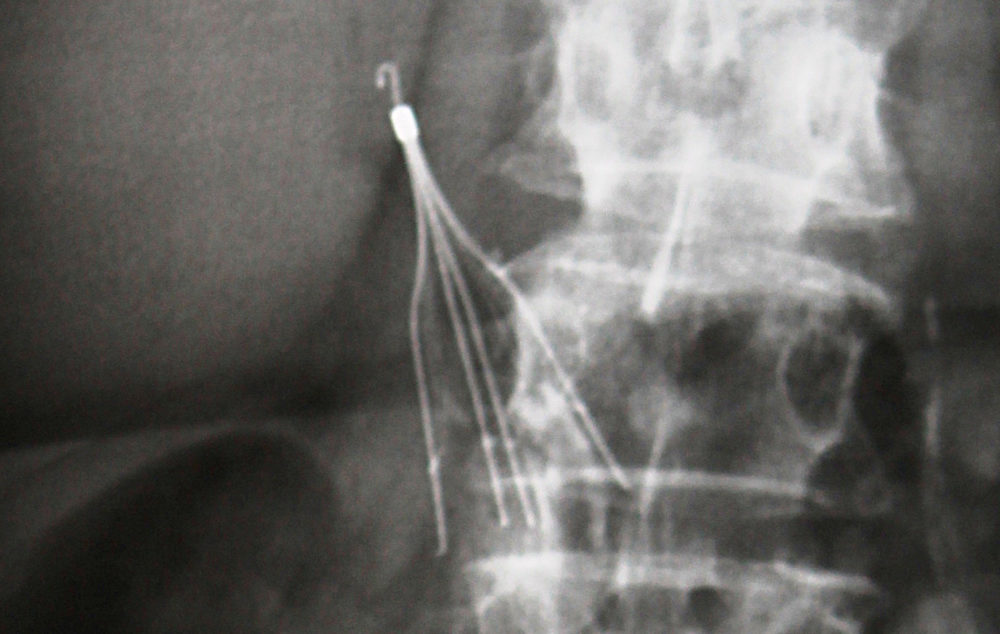IVC Filter Risks Do Not Negate Benefits for Preventing Blood Clots: Study
While researchers acknowledge a high rate of perforations from IVC filters, risks of clinically significant problems were found to be rare.

Following years of reports involving problems with IVC filters, including several designs that have been found to be prone to fracture, break or migrate out position, a new study suggests that the small blood clot filters are generally associated with very few adverse events, and the benefits outweigh the potential risks for many patients.
Inferior vena cava (IVC) filters have been widely used over the past few decades among individuals at risk of experiencing a pulmonary embolism, who are unable to take anticoagulants or after those medications have failed.
The small spider-like devices are inserted into the vein to “catch” blood clots that may break free in the body. However, a number of designs have been plagued with problems, where the struts have punctured the vena vaca, migrated out of position, or even fractured, sending small pieces into the lungs and heart, where they can cause life-threatening injuries.
Thousands of Bard IVC filter lawsuits and Cook IVC filter lawsuits have been filed in prior years, and the manufacturers of certain retrievable designs have agreed to pay millions in settlements to resolve claims involving alleged design defects.

Learn More About
Design Problems with Certain IVC Filters Linked to Severe Injuries. Lawsuits Reviewed Nationwide.
Learn More About this Lawsuit See If You Qualify For CompensationIn a report published last month in the Journal of Vascular and Interventional Radiology, researchers from Indiana University and several other medical schools from across the country looked at adverse events associated with IVC filters, and determined that problems considered clinically significant are few and far between.
The study involved a total of 1,429 patients in a nonrandomized study conducted at 54 sites in the U.S. between October 10, 2015, and March 31, 2019. Researchers looked at how the patients fared at 3,6, 12, 18, and 24 months following IVF implantation. They looked for cases of clinically significant perforation, embolization caused by the filter, new incidence of deep vein thrombosis and other serious adverse events.
According to their findings, procedural adverse events were uncommon and usually minor. However, the researchers noted that one patient died during an attempted IVC filter removal.
In addition, researchers found 201 incidents where an IVC filter strut perforation occurred, including 31 of involving individuals who experienced perforations of greater than 5 millimeters. However, the researchers determined only three, or 0.2%, were clinically significant to the patient. The overall rate of IVC-related adverse events was 0.5%, and researchers said the benefits for preventing pulmonary embolisms and other blood clot problems outweighed the risks.
“Except for perforation, clinically significant (IVC filter-related) and procedural complications were rare. Moreover, assessment of ‘clinical significance’ of perforation was difficult,” researchers concluded. “Although no relationship between perforation and other AEs was demonstrated, the potential for increasing penetration with involvement of surrounding structures suggests that a finding of perforation >5 mm and/or with organ involvement should lead to evaluation for (IVC filter) removal or replacement.”
2023 Bard IVC Filter Lawsuit Update
At the litigation’s peak, C.R. Bard faced more than 8,000 product liability lawsuits over retrievable IVC filters fracturing or breaking, each involving similar allegations that plaintiffs suffered painful and potentially complications when the small devices moved out of position, punctured internal organs or fractured, causing small pieces to travel throughout the body.
Given common questions of fact and law involved in the litigation, claims filed throughout the federal court system had been centralized in the District of Arizona since 2015, where U.S. District Judge David G. Campbell presided over coordinated discovery and pretrial proceedings as part of an MDL, or multidistrict litigation.
Following a series of early “bellwether” trials before Judge Campbell, which were designed to help parties gauge how juries are likely to respond to certain evidence and testimony that will be repeated throughout the claims, including one trial which resulted in a $3.6 million verdict and two other claims that resulted in defense verdicts, individual IVC filter settlements were reached to resolve the vast majority of the claims. However, new lawsuits continue to be brought as individuals experience new problems with the retrievable filter designs.
Get more articles like this sent directly to your inbox.
"*" indicates required fields






0 Comments